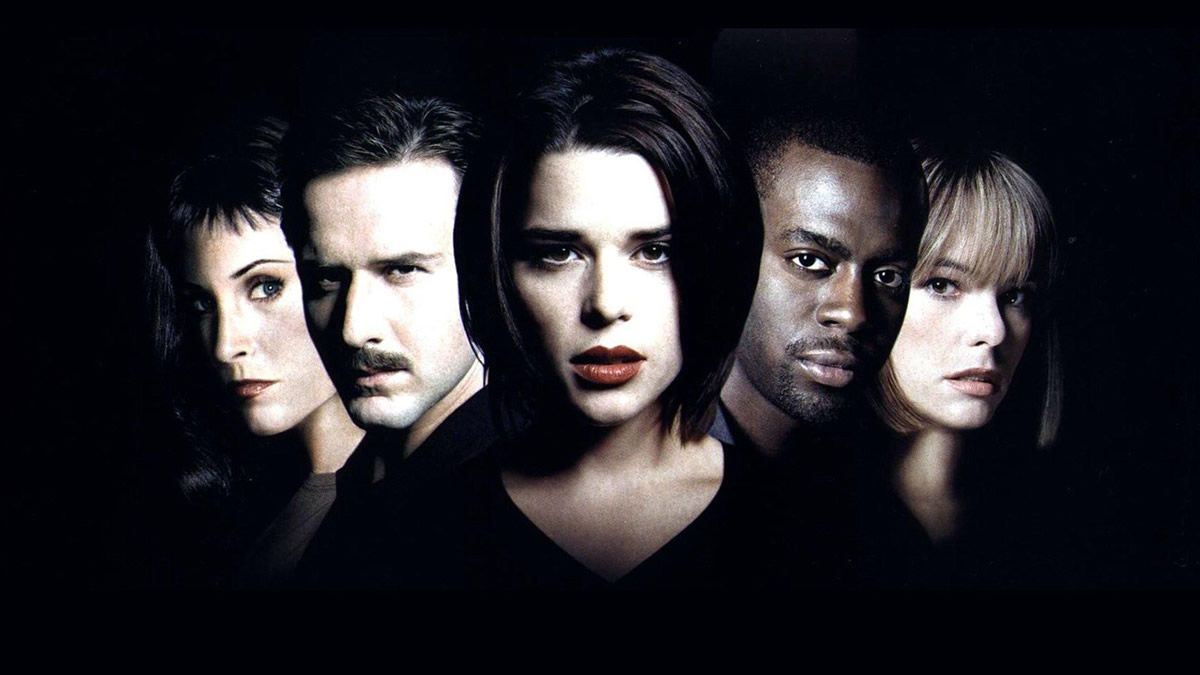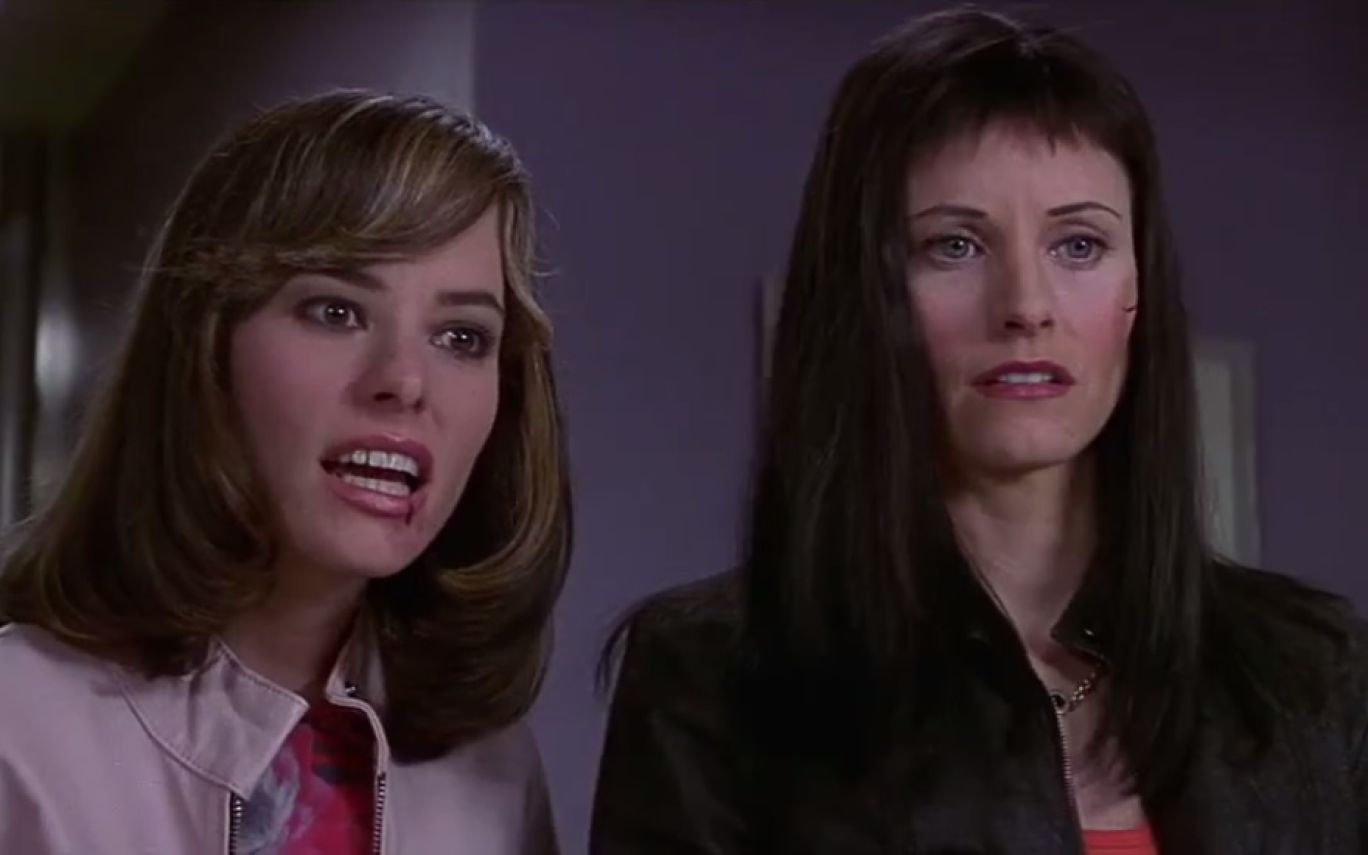Please note that this article contains spoilers for, well, pretty much every one of the Scream films in their entirety.
With the major success of Scream 5, and the recent announcement of a part six, let's revisit what is considered the weakest entry in the series, and ask: is it really as bad as we remember? The short answer is: yes.
Scream 3 finds a reclusive and isolated Sidney Prescott (Neve Campbell) hidden away somewhere in the country; her grounds are maintained by multiple security locks. In a nice twist on her own past trauma, Sidney now spends her days as a telephone counselor for women in distress. Meanwhile, the parallel movie Stab 3 is in production, and Cotton Weary (Liev Schreiber), formerly embroiled in the Ghostface killings but later exonerated, has just been murdered by someone dressed in a very familiar Halloween mask.
Carry On Screaming!
Scream 3 made a Hell of a lot of cash at the box office. On a $40 million budget, the movie was just shy of making all its money back in its opening weekend alone. By the end of Scream 3's run, it had made over $160 million worldwide, and that's not even counting home rentals or VHS and DVD purchases. While the fans may have come out to support it, the critics at the time were less favorable: Empire Magazine fairly summed it up as "a film which may have run out of ideas, but still has energy to spare." Flash forward to the current day, when Rotten Tomatoes ranks Scream 3 at the bottom of the franchise with only 41% (the original Scream has almost double that number).
Is it that bad? Scream 3 certainly has its moments. There are some very neat touches sprinkled throughout the run time, seamlessly adding to that metafictional quality that the series had become so famous for. Take the two Gale Weathers in the film - both the 'real-life' incarnation (Courtney Cox), and the actor playing her in Stab (Parker Posey), that is - teaming up as partners to uncover who's behind the murders. Elsewhere, on a closed film set, Sidney is attacked in a complete replica of her family home from the very first film. It's a great moment, sticking to the series' subversive roots.
One thing Scream - and even its magnificent sequel, Scream 2 - did so well was make meta look easy. The Scream films were so confident in their own understanding of the genre, of how exactly they would manipulate all the clichés that had become so overused. The franchise, however, almost seemed to get complacent and lazy at the stage it was in with Scream 3.
Skeletons in the Closet
Scream 3 feels like it is having an identity crisis, almost as if it's devouring itself, like some cinematic ouroboros. Series director Wes Craven (Nightmare on Elm Street) can't seem to get away from his own roots here, treating us to a godawful and entirely out-of-place dream sequences with Sydney's mother. And by the third act, the knowing nods to clichés have actually just become clichés themselves, and all but entirely taken over.
In a final tired twist, the killer (and screenwriter of the latest Stab movie), Roman, reveals himself as Sidney's estranged half brother on their mother's side. It comes so last minute that it's always felt out of place, hackneyed and rather like Star Wars' sole family tree. Not to mention, horror movie peer Halloween II had done it already... almost 20 years earlier. With that, Roman also details how he personally had influenced Billy and Stu, Scream's original killers. The reveal doesn't feel earned, and in fact retroactively diminishes the power of the original's climax, unfortunately.
There is a brief scene featuring fan-favorite movie nerd, Randy (Jamie Kennedy), from beyond the grave, having taped his "trilogy rules" for the remaining cast members. It's eerily neat, and a nice workaround to be able to include the character again (despite having been murdered in Scream 2). But his statement doesn't really feel true; in comparison to the glaringly obvious conventions seen so many times in previous horror flicks, the trilogy and its "rules" comes off as a rarity. Any series of three films (one right after the other) is such an irregularity in modern day horror cinema, and as such, to claim that they have conventions in the first place just doesn't really hold up. This is even more glaringly obvious considering that two of the biggest trilogies, Lord of the Rings and The Matrix, completed their third parts only after the release of Scream 3. Once again, it makes a beloved character, so strong in his previous incarnations, come off as uncharacteristically misguided.
Scary? Funny? No.
There's a strange, almost embarrassing goofiness shooting up the spine of this picture, featuring secret doors, and bookshelves revealing spooky passageways. Characters opt to 'split up' and willingly go down into basements, having learned nothing. Doors have a mysterious habit of opening on their own accord from that infamous Californian weather, and by the time that Ghostface pulls a long rug and trips up one of his victims, the tense dread that the series was so prolific at building had all but been replaced by what feels like an R-rated Scooby-Doo episode, and not even a good one.
Gone are the iconic phone calls, teasing and lubricating cinema goers' film knowledge, replaced instead with the killer leaving half-baked clues at crime scenes. The fear surrounding those phone calls and the terror of the subsequent chase has all but dissipated for dumb, practically unintentional slapstick, and the new cast additions add nothing whatsoever.
Even the setting doesn't really work. Taking the terror out of the sleepy town and transporting it to Hollywood unfortunately makes it all feel artificial, at times rubbery, even. Chalk that one up to the cameos too. Some of them work: Lance Henriksen makes a great sleazy director, alongside a neat cameo from the legendary Roger Corman, whereas the additions of Carrie Fisher and Jay & Silent Bob immediately date the movie and remove the audience right out of the story. There's an argument that could be made for how Scream 3 uses vapidity and plastic emptiness to mock the Hollywood in which it takes part, though you'd have to bend over pretty far backward in a game of 'benefit of the doubt' limbo to do so.
Scream 3 is... fine? It's functional, with some really neat scenes here and there, it just happens to be the duffest in an otherwise very solid, if not classic series of tremendously scary movies. It lacks any real scares or sense of dread. It coasts on an inebriated sense of self-importance following its own previous successes, instead succumbing to the exact tropes that it had beforehand mocked. With the fresh-enough new Scream, and with Scream 6 around the corner, the Scream series deserves its legacy status and certainly should be allowed to cherry-pick from its own past. Scream 3, however, seems to go about it in a way that tarnishes its own history.




